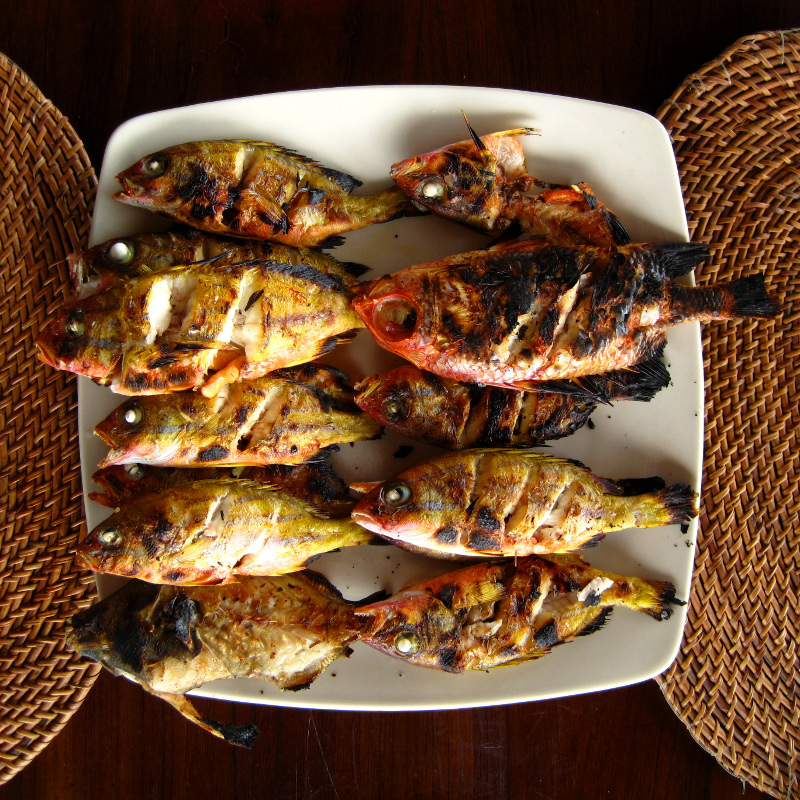Fishing in Amed
After 10 days in Ubud, we decided to break free from the tourist throng and head to the sleepy northeast beach town of Amed. Of course no sooner had we’d checked in, than they asked, “You have program today? You want go snorkeling? Japanese shipwreck? Massage? What time massage?” Maybe it’s that we’re long term travelers and not looking to pack every moment with activity, but I wonder if they think it’s strange that we don’t want to commit to anything right away. We need time to unwind, catch up on blog posts, dip in the pool, read, and get our bearings.

But by our second lazy day in Amed, we figured we had to do something, so we scanned the list of activities, and one caught my eye: jukung boat fishing—180,000 rupiah (or about $18). It’s not that I have much interest in fishing per se, but I do like to eat fish, and Amed is a fishing village, so it seemed both unusual and appropriate. Stephanie was thinking the same thing, and she’d been wanting an excuse to get out on one of the traditional boats.
So last Wednesday we set the alarm for 5 in the morning, got up before the roosters, and met our local, non-English-speaking fisherman at the gates that led from the bungalows to the beach. We helped him drag his jukung boat—a long, narrow, and deep sort of canoe with outriggers on both sides—down the volcanic black sand beach to the surf, got in, and we were off. We didn’t go too far from the shore, or too far from where we’d put in, which was comforting as this was not a “safety talk and lifevests” sort of outing. This was a real Balinese fisherman, in a real handmade, patched-up fishing boat.
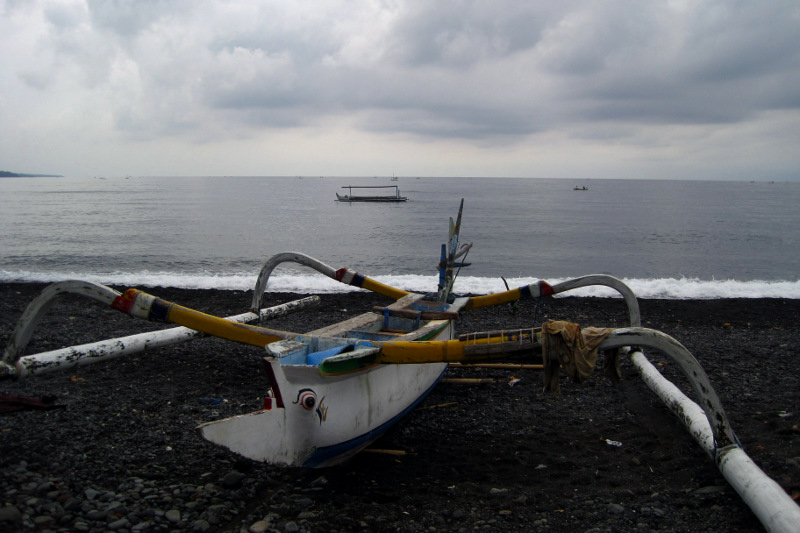
The style of fishing was simply dropping a line into the water with a lead sinker and two hooks with bits of fish for bait. The other end of the line was just a spool. It reminded me of how the Filipino crew fished off the Cap Cleveland. At first we circled in the water with a line out and the engine on, but this didn’t seem to have any effect (unless we were trying to round up all the fishies). Eventually we stopped in a spot and dropped the lines straight down, letting them out a lot—it was surprisingly deep.
Right away we caught a few fish. A more accurate description would be: I’d feel a vibration on the line that was probably nothing, I’d hand it to the fisherman to analyze, he’d feel the line, shake his head “No”, and then all-of-a-sudden, he’d yank up on it as if performing a sort of magic trick. A smile would come over his face—the universal body language for “I caught a fish!” He’d hand the line back to me, and I’d start pulling it in, which would take a while, since we’d let so much out. It happened like this two or three times. And at the end was a beautiful, barely three inch long yellow fish with blue stripes. It seemed too small to bother with, but he’d take it off the hook anyway and throw it into the bucket.
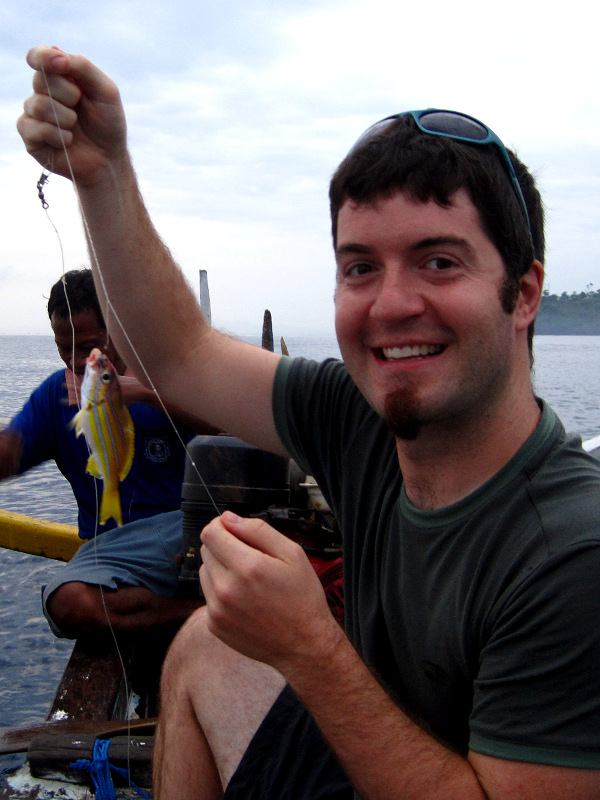
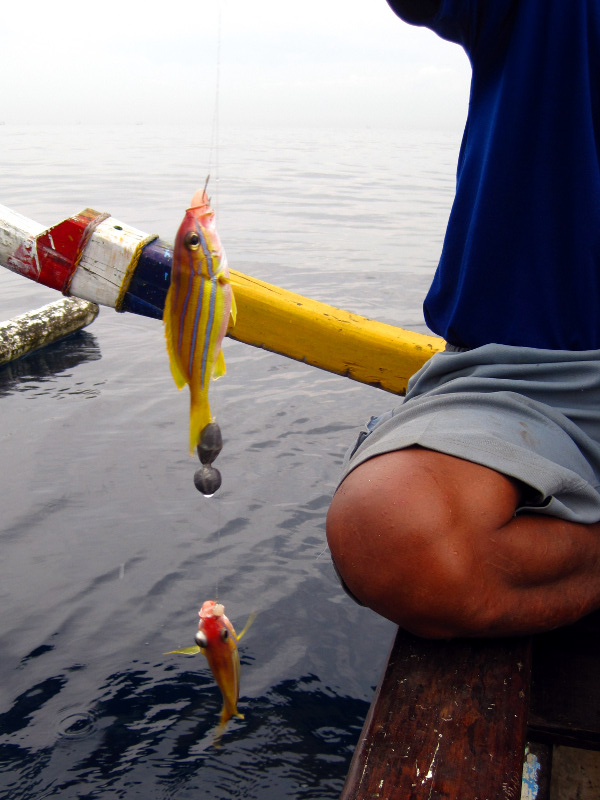
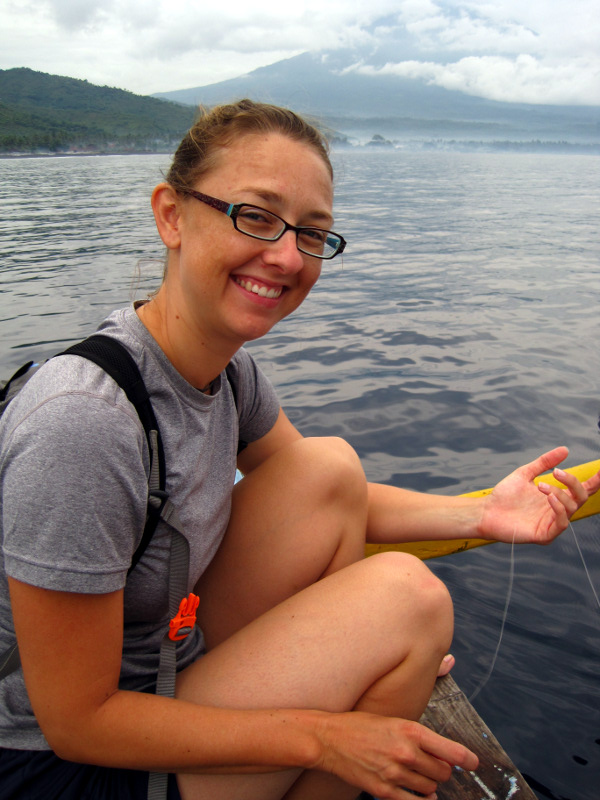
Then we’d motor to another location and repeat. It seemed that we were having less luck over time. After two hours on the water I was starting to feel a bit queasy, and Stephanie’s bladder was about to burst, so we were happy when he made the motion that it was time to return. The bucket contained seventeen small fish. He took three for himself, and we walked back to the the hotel with fourteen. They put them in the fridge for us and told us we could take them to the warung (the local restaurant) next door, and they’d cook them up for us.
At lunch time that’s exactly what we did. We recovered our fish, brought them down the beach, and the folks at the warung knew exactly what to: scaled them and threw them on the grill. We had so much fish, we ended up giving two away. Stephanie had two, and I managed to eat the remaining ten! I was probably exerting more energy trying to separate the meat from the bones, than I was getting from the fish itself. It took a while to work my way through them, but in the end, I was full, sweaty, and satisfied.

